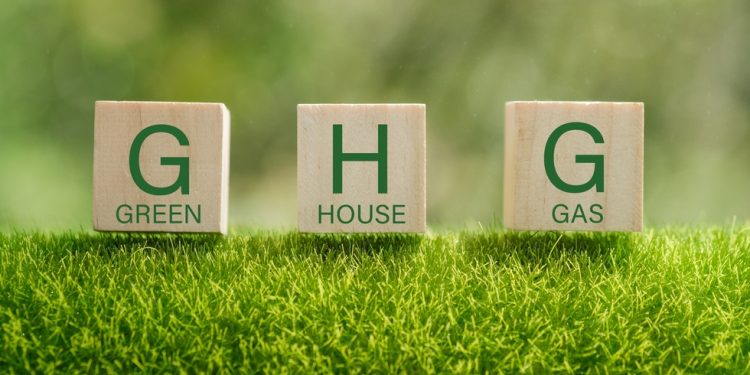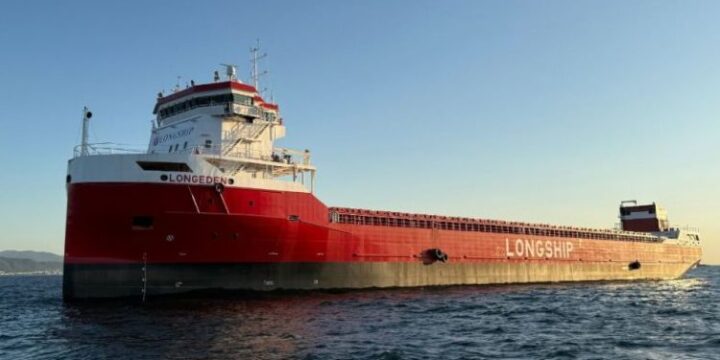July 21, 2025

The maritime shipping industry can promote the uptake of zero-emission fuels through voluntary schemes but need strong verification of these schemes to ensure that efforts to decarbonise lead to long-term solutions, finds a new report by UCL researchers and UMAS.
The “The role of insetting in supporting shipping’s energy transition” report lays out recommended guidelines for the international maritime shipping industry to ensure that voluntary private “insetting” schemes effectively support the shipping industry’s energy transition away from fossil fuels.
According to the report, maritime insetting schemes offer a voluntary, early-stage tool to support shipping decarbonisation before regulatory measures are fully in place. They can stimulate value chain coordination, attract private investment, and signal market readiness for low- and zero-emission solutions. Early adopters can benefit by positioning themselves as innovators and influencing future regulatory frameworks, potentially reducing stranded asset risks.
However, with the IMO Net-Zero Framework (NZF) approved in April 2025 during MEPC 83 and regulation expected to become the main driver of decarbonisation, the window for voluntary insetting schemes to play a meaningful role is limited. If these schemes are not aligned with forthcoming regulations, especially in how emissions are accounted, they risk becoming irrelevant.
Lead author Professor Tristan Smith (UCL Energy Institute) said: “With the approval of the International Maritime Organisation’s (IMO’s) Net Zero Framework, there’s now greater, if not perfect, clarity on the role regulation will play in shipping’s energy transition and therefore key gaps for voluntary action to assist with. One key risk discussed in the report relates to how greenhouse gas emission reduction efforts are recognised in both regulation and voluntary initiatives, and therefore the benefit if voluntary actions can increasingly align with the likely form IMO greenhouse gas emissions accountancy will take.”
Still, well-designed insetting schemes can support first movers by demonstrating viable business models for clean technologies, even in the absence of regulation. They can also help overcome barriers like split incentives and limited access to capital, especially for energy efficiency measures, though current market coverage remains limited.
To realise this potential, schemes must be grounded in the latest available science, governed by reliable third parties, and designed to promote scalable, long-term decarbonisation solutions
… said Dr Nishatabbas Rehmatulla (UCL Energy Institute)
Risks and challenges
As well as presenting opportunities, including in the case of maritime insetting, there are risks. These are discussed, along with the potential ways in which they can be managed, in order to provide specific recommendations that can maximise the success and value of maritime’s use of insetting.
There is growing literature indicating that private or non-state action is not leading to desired outcomes in various settings, whether it is tangible emission reductions, a lack of enforcement, or setting appropriate and effective environmental standards to feed into regulation. Voluntary actions can therefore face pitfalls, can be misguided and provide unhelpful distractions—all of which may be faced by maritime insetting schemes.
Using the literature of wider experiences as a prompt, maximising positive and catalytic potential, maritime insetting efforts should ensure they address the following challenges:
Inappropriate boundary setting:
Whilst there are efforts to understand the importance of system boundaries, there is only emergent independent guidance or standards on the issue of boundary setting in general, nor in maritime insetting schemes. This stems from a more fundamental question on how to define value chain boundaries for an organisation. Each company will have its own interpretation of what its value chain is, which is compounded when multiple organisations are working to establish the same. The book and claim systems in existence have tended to be quite broad and opaque, e.g. covering the whole transport sector, with unclear methodologies for accounting and verification.
Recommendation: Adopt GHG Protocol guidance on defining insetting boundary as only ‘within the value chain, not adjacent to it’. In the case of maritime insetting schemes, adopt the SFC’s Book & Claim Methodology, which recommends that transactions be restricted by mode. The appropriate boundary should therefore encompass the fuel supply chain, port infrastructure, vessel/cargo carriers (of different sizes and types), and cargo owners (bulk and containerised).
Incompatibility with broader regulation and additionality:
If insetting is seen as a bridge to regulatory-driven energy transition, it needs to be a bridge to forthcoming regulations and not a dead-end or an expensive distraction, e.g. to avoid risks of further ratcheting up of policy creating stranded asset risks. For example, if there is an incompatibility between insetting and regulation (e.g. in GHG accountancy), the relative cost of different pathways/technologies may not be the same under insetting as under regulation – asset investments by early adopters to take advantage of insetting incentivisation may then become stranded. Where there are existing or anticipated regulations, insetting schemes should ensure compatibility/coherency with expected emissions accountancy practices, as well as additionality over any regulatory compliance strategy – this can be achieved if action is taken before regulations, e.g. before stricter intensity targets are enforced.
Recommendation: Ensure all claimed emissions reductions exceed regulatory compliance requirements. Follow the latest available science in setting the standards. For example, adopt a full lifecycle emissions accounting (well to wake) approach and include all GHG emissions and emissions factors when using insetting schemes to decarbonise emissions from the fuel supply chain.
Verification standards:
There are limited examples of transparent and universal standards or guidance for the certification and verification of the emissions reductions promised by insetting schemes. As a result, companies rely on frameworks and standards pulled from a similar pool of inconsistent standards or their own internal standards. These have varying stringency and scope, and are often criticised in the offsetting market as ‘marking your own homework’. This has led to similar concerns around emissions accountancy integrity, additionality, permanence, transparency and double counting as well as accusations of some insetting schemes simply being offsetting under a new guise.
Recommendation: Use independent third-party verifiers and transparently report the verification process used. Adopt GHG Protocol for Project Accounting to provide clear and sufficient information for reviewers to assess the credibility and reliability of GHG reduction claims. Maritime insetting schemes should use existing structures for verification, e.g. Recognised Organisations such as classification societies.
Compatibility with long-term solutions:
Current insetting schemes predominantly rely on transitional fuel choices such as biofuels due to their immediate availability, relative ease of use as a drop-in fuel and cost-effectiveness, but face scalability constraints due to limited supply and competing demand from other hard-to-abate sectors. This focus on transitional fuels creates significant risks of technological lock-in and diverting investment away from Scalable Zero-Emissions Fuels (SZEFs) such as green hydrogen, ammonia, which are essential for long-term decarbonisation.
Recommendation: Maritime insetting schemes should have clear guardrails that promote the uptake of fuels that are scalable and zero/close to zero emissions.
Compatibility with a just and equitable transition:
An unrestricted insetting scheme will channel funds toward the most cost-efficient geographical areas, and there is a risk that this favours developed nations with good existing infrastructure and lower costs (e.g. costs of capital). Without safeguards, there is a risk of marginalizing the Least Developed Countries (LDCs), and Small Island Developing States (SIDS), most vulnerable to the negative environmental impacts of climate change. There is also a possibility that lowest cost energy production will occur in low-income countries, separated from those in higher-income countries with higher willingness to pay a premium for GHG emission reduction. If this is the case, and there are safeguards to ensure investment is genuinely ‘just and equitable’, there can be compatibility.
Recommendation: Maritime insetting schemes could contribute to a just and equitable transition, e.g. through specific targeting at initiatives that enable the uptake of fuels that are scalable and zero/close to zero emissions in regions that are at risk of being priced out of shipping’s transition opportunity. Monitoring of the beneficiaries of insetting, where the projects that they enable are located, can track whether or not this is the case, or if additional intervention is needed.
Key conclusions
Insetting at its best can be a useful tool for creating a pathway for fully decarbonising shipping. It creates a lower ‘cost of entry’ for early adopters by aligning shipping operations, which might be able to pay price premia, with opportunities for the least cost use of future fuel/technologies. Particularly in a period in which regulation is anticipated but not yet in place, it can help companies to explore, learn and strategise to better prepare for a period of regulation. However, insetting has risks of unintended consequences, including because it helps to establish ‘norms’, and these risks can reduce its value.
To maximise insetting’s potential, schemes need to follow the latest available science, have effective governance from reliable third parties, and promote long-term decarbonisation solutions without creating adverse impacts for countries most vulnerable to climate risks. The window of opportunity for maritime insetting schemes to demonstrate their catalytic potential is likely to be narrow but still significant.
Their ultimate value will be measured not by the emissions credits they generate, but by their ability to rapidly accelerate the maritime industry’s transition to a zero emissions future.

